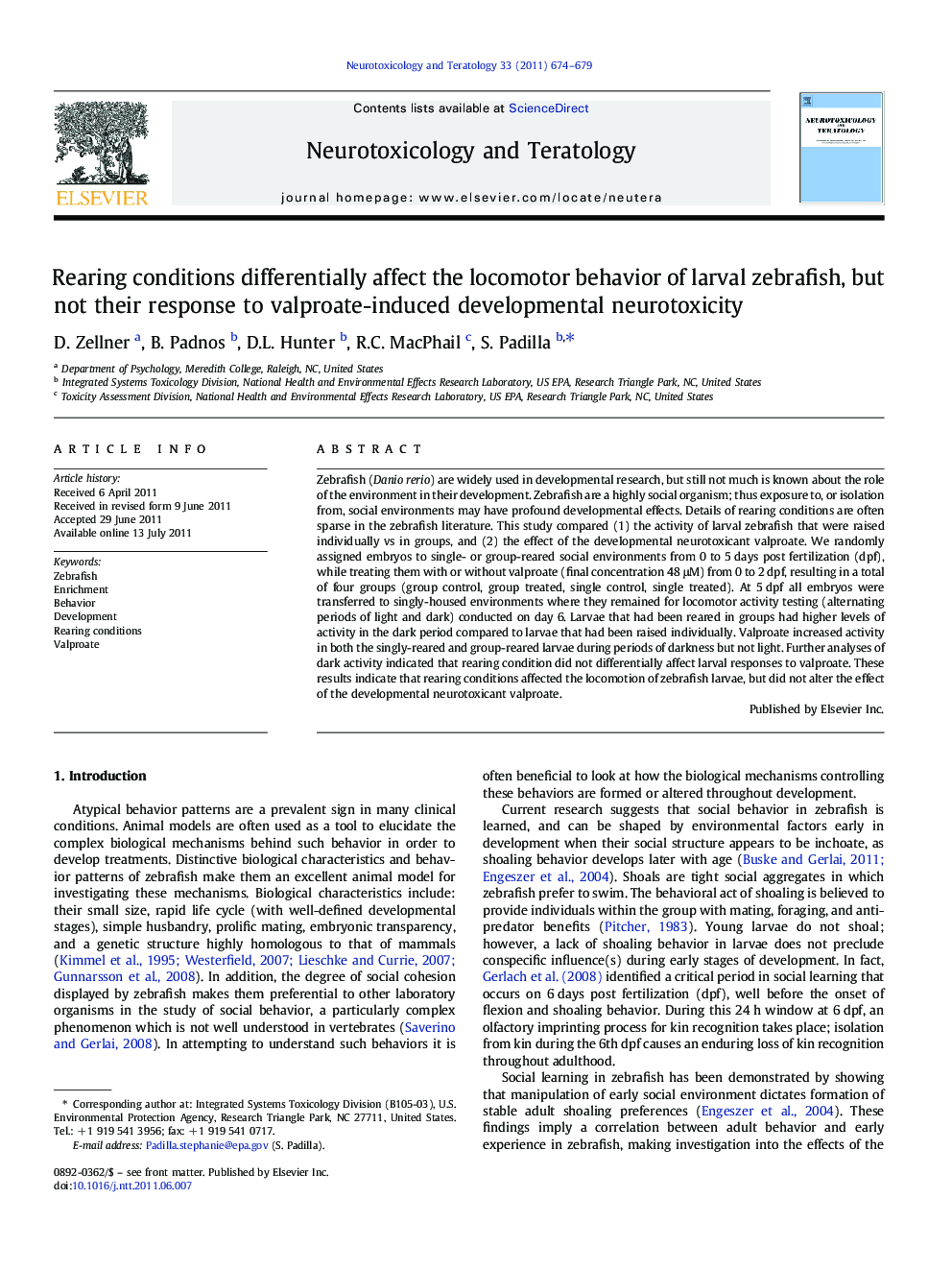| Article ID | Journal | Published Year | Pages | File Type |
|---|---|---|---|---|
| 2591604 | Neurotoxicology and Teratology | 2011 | 6 Pages |
Zebrafish (Danio rerio) are widely used in developmental research, but still not much is known about the role of the environment in their development. Zebrafish are a highly social organism; thus exposure to, or isolation from, social environments may have profound developmental effects. Details of rearing conditions are often sparse in the zebrafish literature. This study compared (1) the activity of larval zebrafish that were raised individually vs in groups, and (2) the effect of the developmental neurotoxicant valproate. We randomly assigned embryos to single- or group-reared social environments from 0 to 5 days post fertilization (dpf), while treating them with or without valproate (final concentration 48 μM) from 0 to 2 dpf, resulting in a total of four groups (group control, group treated, single control, single treated). At 5 dpf all embryos were transferred to singly-housed environments where they remained for locomotor activity testing (alternating periods of light and dark) conducted on day 6. Larvae that had been reared in groups had higher levels of activity in the dark period compared to larvae that had been raised individually. Valproate increased activity in both the singly-reared and group-reared larvae during periods of darkness but not light. Further analyses of dark activity indicated that rearing condition did not differentially affect larval responses to valproate. These results indicate that rearing conditions affected the locomotion of zebrafish larvae, but did not alter the effect of the developmental neurotoxicant valproate.
► We compare group vs. individual rearing and valproate exposure in larval zebrafish. ► We use an alternating light and dark paradigm with predictable effects on locomotion. ► Group rearing increases activity in dark only. ► Valproate increases dark activity regardless of rearing condition. ► We conclude that rearing conditions may modulate locomotor activity in larval zebrafish.
